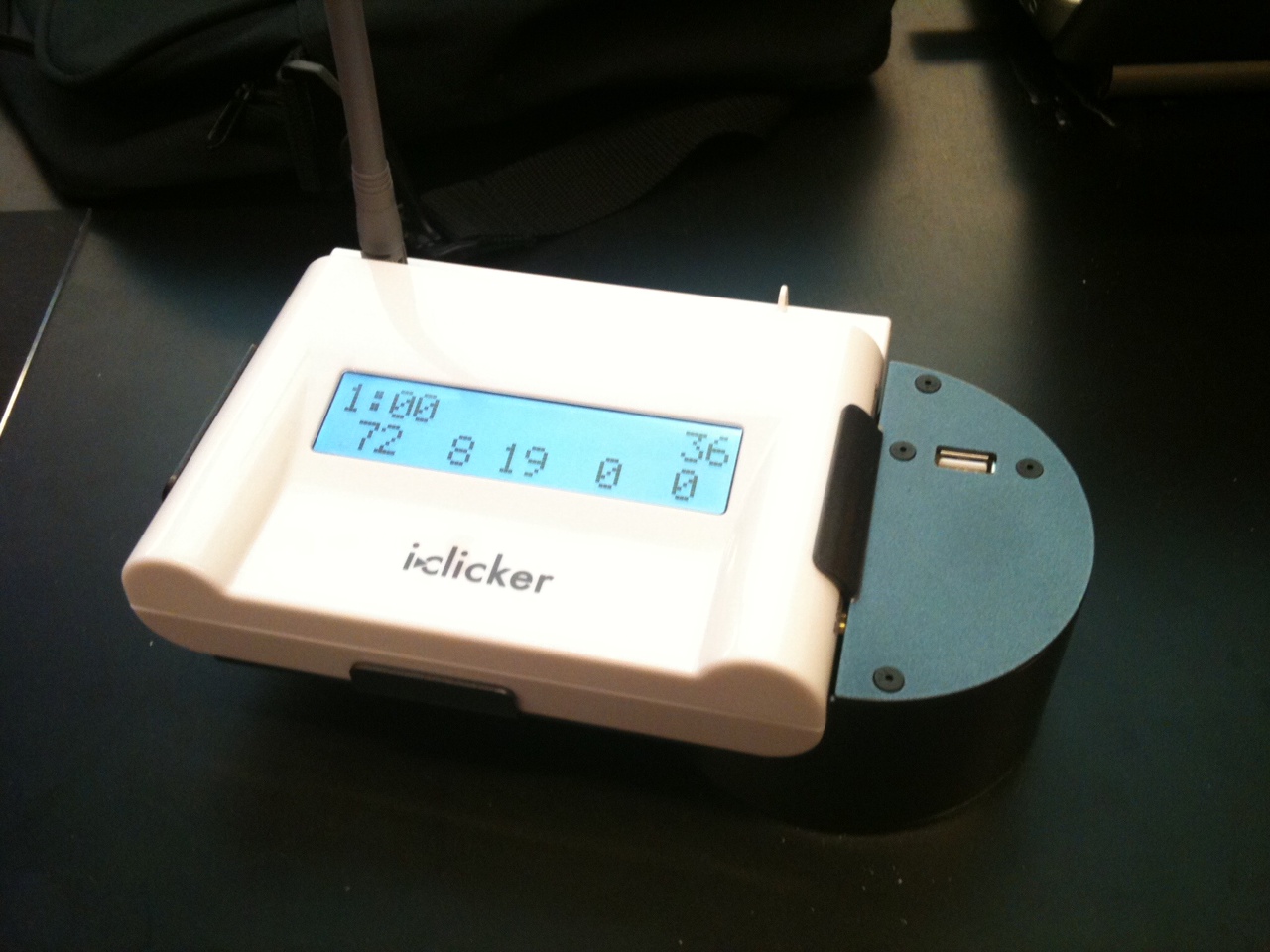As some of may have heard, i>clicker is coming out with new hardware. UBC Classroom Services is already installing the new i>clicker2 receiver in many classrooms. I’ve been working with them to design a holder that mounts the receiver on the desktop so the receiver is 1) secure 2) visible.


This new receiver is fully compatible with the current i>clicker clickers, the simple, white A-E clickers we know and love.
No surprise, along with the new receiver comes a new i>clicker2 clicker.
Hold it, hold it! Don’t have a fit! Yes, there are more buttons and that seems to explicitly contradict i>clicker’s advertised simplicity. The first time I saw it, yes, I, er, had a fit.
However, I’ve since had a long chat with my colleague Roger Freedman (follow him on Twitter @RogerFreedman ) at UCSB. He’s a great educator, textbook author, avid clicker user, and i>clicker2 guinea pig. In his opinion, which I sincerely trust, i>clicker2 opens up new and powerful avenues for peer instruction. His favourite is ranking tasks which can be implemented without those awkward clicker questions with choices like A) 1>2=3>4 B) 1=2>3=4 …
Here’s the thing(s):
- instructors could use the i>clicker2 to revert back to ineffective peer instruction questions
- i>clicker2 opens up new options for peer instruction
- they’re coming (though UBC has not declared when)
Conclusion Let’s be pro-active and prepared to train instructors when the i>clicker2 arrives.
The first step (after finishing your fit) is figuring out what the new clicker can do. And that’s the reason for this post. In 30 minutes – er, make that 11 minutes – I’ll be heading to a demo. The rest of this post will be written shortly…

It’s 3 hours later. I’m E X C I T E D! The demo with Roberto and Shannon was, well, they had a wide spectrum of audience members, from never held a clicker before to experienced users. I had a great chat with them afterwards, though. Details below, but first, some nice features of the i>clicker2 unit:

- (left) When you turn on the i>clicker2, it flashes the ID number. No more problems with the sticker getting rubbed off (though Roberto assures us they have better stickers now.)
- (center) There are only 2 batteries (but still 200 hrs of use). See those 2 little sticky-outty things at the top? They’re rubber feet to stop the clicker from sliding off the desk. Nice touch.
- (right) There’s a metal post for a lanyard. Good idea.
I won’t go into all the details about the features of the software. There are lots. You can take the tour at iclicker.com.
The hard part
Those of us who have been using i>clickers for peer instruction have gotten pretty ingenious about asking good, discussion-promoting questions even though we’re limited to choices A–E. It’s going to take some thinking and discussion to figure out how to take advantage of the expanded capabilities of the i>clicker2. Ranking tasks are a great start: students can easily enter a string of letters like BCDEA to rank items. It’s going to take some testing. Which leads to…
The great part
Roberto and Shannon are going to lend me a class set of i>clicker2’s for the term! Eighty clickers to try out in the classes I work in. Suh-weet!
I was chatting with my friend Warren (@warcode) afterwards. He said, “When you asked Roberto to show you what i>clicker2 can do that i>clicker can’t, his response was, essentially, ‘Here’s a set clickers. You tell us.’ ”
Challenge accepted! Stay tuned!


